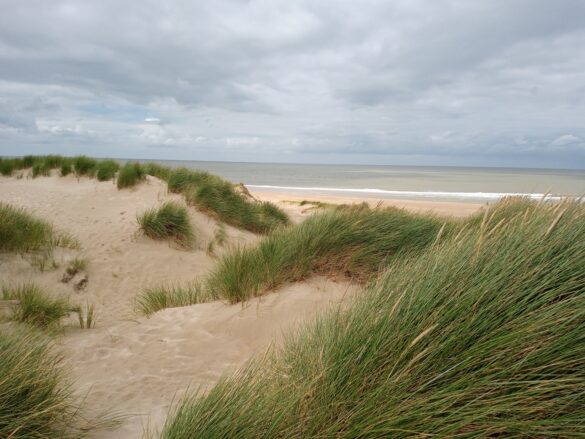Flemish Climate Plan 2013-2020 – two complementary plans in one policy framework
Flanders is the Dutch-speaking northern portion of Belgium. Flanders, despite not being the biggest part of Belgium by area, is the area with the largest population (68.5%). Flanders has one of the highest energy intensities in Western Europe due to its industrialised nature and because of its dense transport infrastructure. Flanders stands to be most affected by climate change through drier summers and heavy summer storms, more humid winters and sea level rise. Flanders supports the EU target of reducing European greenhouse gas emissions by 80 to 95% below 1990 levels by 2050.
Efforts to limit the climate impact of Flanders have been steadily increasing since 2000. The first Flemish Climate Plan was approved by the government in 2003 and covered the period 2002-2005. This plan gave an overview of all climate-related policies and measures in Flanders. It was the work of the Flemish Taskforce on Climate, which had been established in 2001. A second Climate Plan for 2006-12 followed, which reported on the outcomes of the first plan and was created in consultation with stakeholders involved in the Flemish Climate Conference. This plan had four goals:
– Reaching the Kyoto target for Flanders (5.2% reduction on 1990 levels between 2008-12)
– Expanding on the vision and strategies for Flanders’ climate policy in the near, medium and long term
– Understanding how further emissions reductions could be achieved post-2012
– Developing new climate policy
Two plans, one framework
This plan was superseded by the third Flemish Climate Policy Plan (VKP) 2013-2020, which actually consists of two complementary plans in one policy framework. The Flemish Mitigation Plan (VMP) and the Flemish Adaptation Plan (VAP). The VMP is concerned with reducing emissions and developing a low carbon society. VAP is focused on better understanding the impacts of climate change in Flanders and subsequently improving resilience and reducing vulnerability. The justification for developing the parallel plans is because the time horizons, sectors and approaches to tackle adaptation and mitigation are distinct. So whilst there are synergies and crossovers, it makes sense to work towards plans specific to the challenges of each.
VAP introduces the concept of “climate reflex” into Flanders’ response – it involves screening all policies (existing and new) to assess its ability to address climate change. VAP is concerned with mapping and understanding the existing initiatives related to adaptation and better linking with other relevant policy subjects, in developing a coherent set of policies and new adaptation measures and raising awareness and profile of the relevant stakeholders working on adaptation. Once the mapping is complete, a monitoring system needs to be set up to monitor the effectiveness of the plan.
By introducing adaptation into the climate discourse in Flanders in this organised way, it is intended that adaptation becomes as visible as mitigation efforts across Flanders, that it features more in communication about climate change. VAP is working to make adaptation responses more structured, which in turn will make it easier to identify barriers, gaps, overlaps and means to address these.
The Flemish Task Force Adaptation (VTFA), under the guidance of the Environment policy team, prepared VAP. The task force included employees from that met under the chairmanship of the policy field Environment. The working group consisted of employees from 12 different departments in the Government, including Administrative Affairs, Economy, Science and Innovation, Finance and Budget policy area, and Mobility and Public Works, amongst others. The VTFA has taken over the work of the Flemish Adaptation Steering Committee (VAS).
VAP has a multi-level focus, with awareness raising and knowledge exchange on adaptation highlighted as externally focused (international and national) initiatives. Measures focused on eleven policy areas are addressed in VAP – including sustainable water management, maintaining soil quality, mobility, tourism and health (amongst others), but the plan acknowledges that climate impacts are complex and can be unpredictable, and that there is likely to be a significant degree of cross-over and interdependencies between the measures and the departments responsible for implementing them. There is no dedicated line item for adaptation in the Flemish budget, since the plan it is to be integrated into the efforts of across all policy areas through existing departments, so too will the budget come from each department to enact adaptation measures.
Pragmatic approach
Resilience and cost effectiveness are central to VAP’s approach to determining the adaptation policies to invest in and implement. The cost of the adaptation must be lower than the cost of the damage prevented. The plan also appreciates that prompt responses to improve resilience before impacts really have an effect is likely to be less costly than waiting is some cases, but in others it may be sensible to wait – and the plan allows for such case-by-case action to be taken. And because cost effectiveness is important and uncertainty is inherent, a no-regrets approach has been adopted in the VAP, meaning that measures are deemed valuable regardless of the degree of climate change that ultimately impacts Flanders. Adaptation measures must be robust, and even no-regret, meaning that low-tech and simple systems will be prioritised.
The Government of Flanders acknowledges that it alone cannot be responsible for all adaptation efforts in the region; the centrally important role of citizens, businesses and the other levels of government that will also be taking steps to adapt to climate change and reduce their vulnerability and improve their own resilience is discussed in VAP. Both VAP and VMP are running alongside Flanders’ long term Vision 2050 [LINK to Action 7] that is concerned with localising the SDGs in the region.




